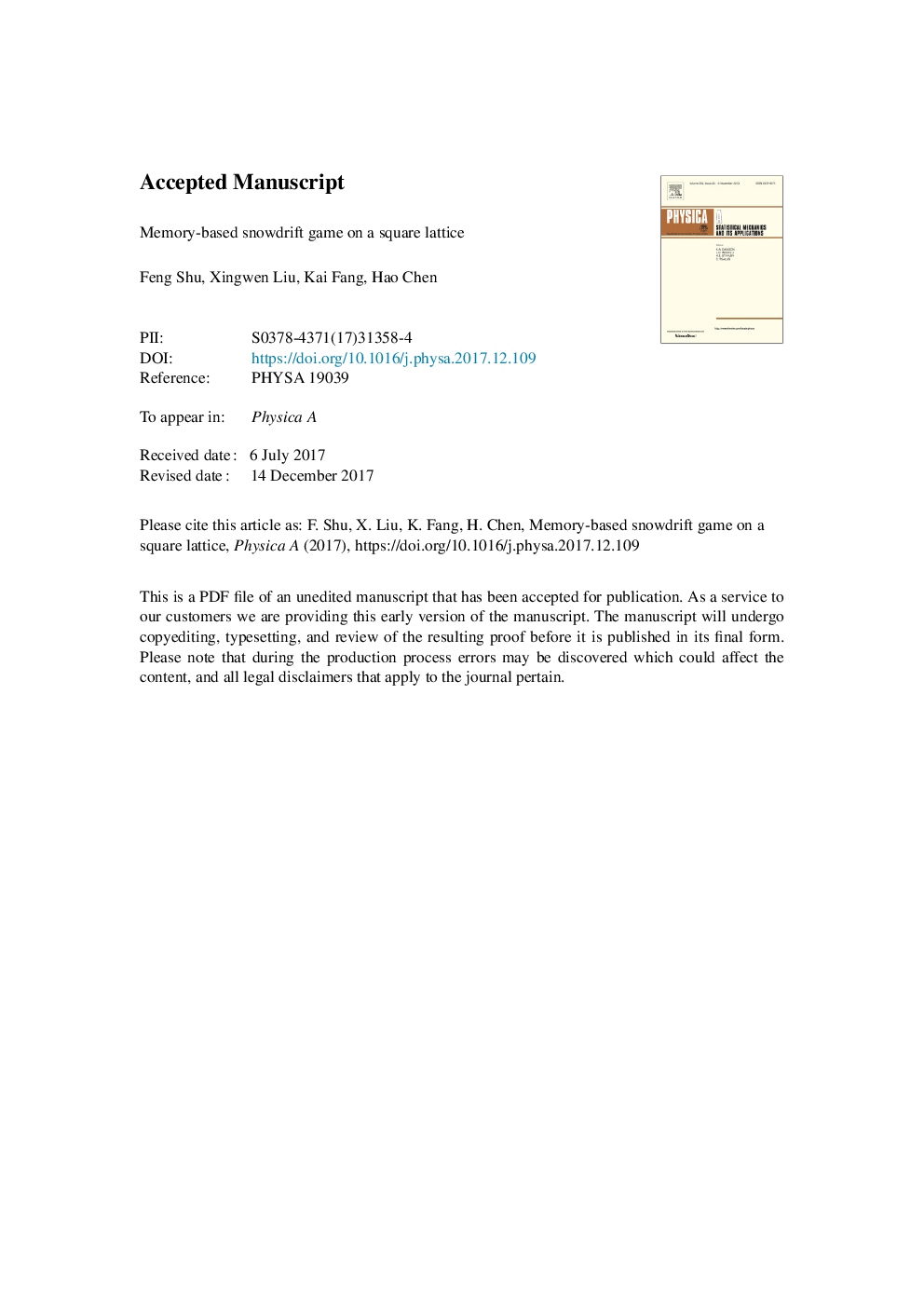| Article ID | Journal | Published Year | Pages | File Type |
|---|---|---|---|---|
| 7375951 | Physica A: Statistical Mechanics and its Applications | 2018 | 25 Pages |
Abstract
Spatial reciprocity is an effective way widely accepted to facilitate cooperation. In the case of snowdrift game, some researches showed that spatial reciprocity inhibits cooperation for a very wide range of cost-to-benefit ratio r. However, some other researches found that based on the spatial reciprocity, a wider range of r is helpful to achieve a high cooperation level. Thus, how to enlarge the range of r for the purpose of promoting cooperation becomes a hot topic recently. This paper proposes a new memory-based method, in which each individual compares with its own previous payoffs to find out the maximal one as virtual payoff and then randomly compares with one of its neighbours to obtain the optimal strategy according to the given updating rules. It shows the positive effect of spatial reciprocity in the context of memory. Specifically, in this situation, not only the lower ratio can appear a high cooperation level, but also the larger ratio r can emerge a high cooperation level. That is, an expected cooperation level can be achieved simultaneously for small and large r. Furthermore, the scenarios of both constant-size memory and size-varying memory are investigated. An interesting phenomenon is discovered that the cooperation level drops down gradually as the memory size increases.
Related Topics
Physical Sciences and Engineering
Mathematics
Mathematical Physics
Authors
Feng Shu, Xingwen Liu, Kai Fang, Hao Chen,
